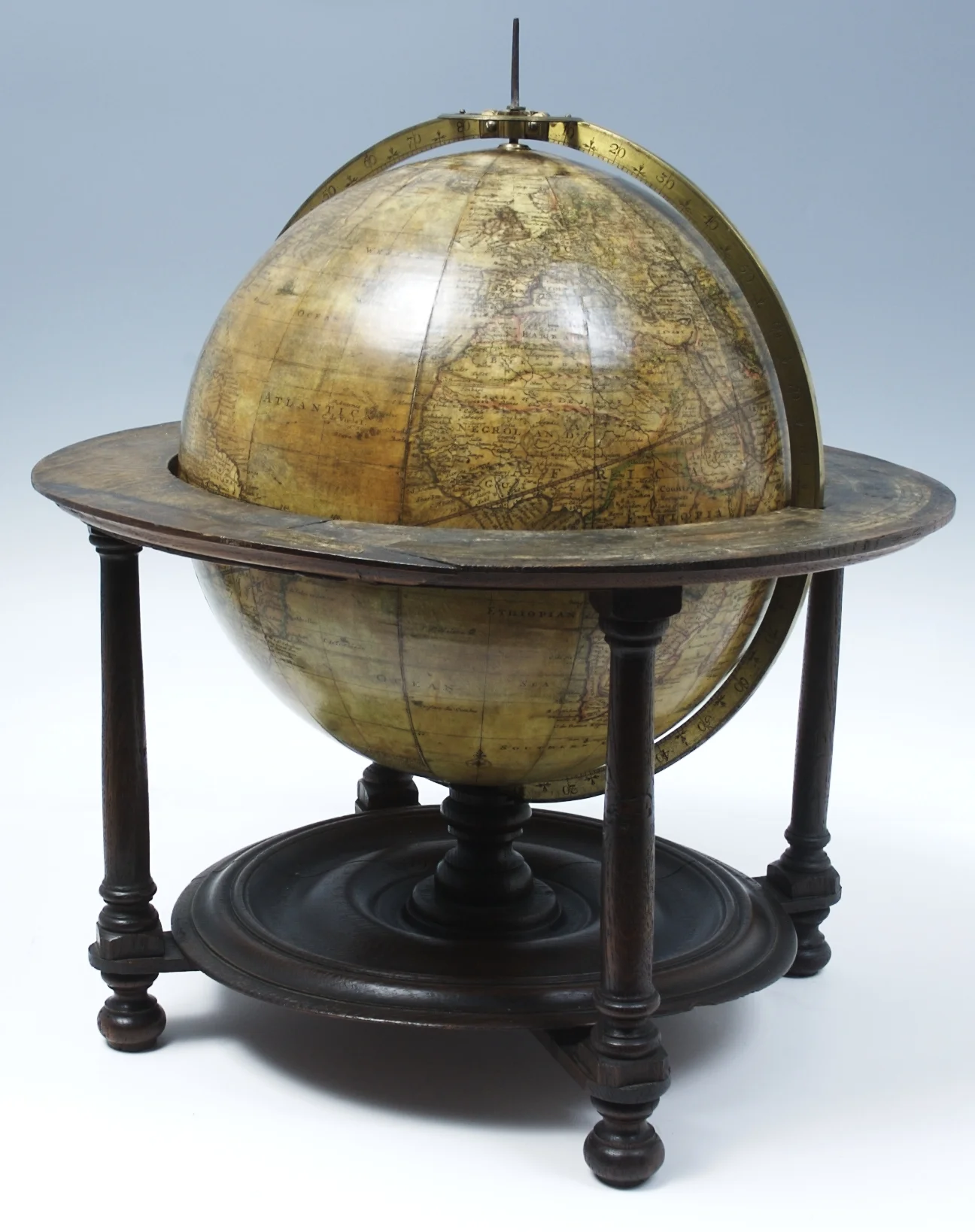Globe Patches
In the age of exploration and colonies the amount of the world being discovered to the West each month was large and accelerating. As ships came back to port the cartographers would share (usually for money) their latest coastlines or islands, although not always with accuracy that you would have hoped. There were several famous foriegn lands which ended up not actually existing, but were common knowledge. One of the famous ones was the island of the Baja Coast in California, which you will be familiar with as an actual peninsula, but was reported as disconnected from at least 1510 onwards and was only firmly put to rest as a debate in 1774! Here are a couple of maps, both of which are from the 1650s at the height of the myth:
For the nobility who followed these geographical developments from afar, they had a problem. To buy an atlas or globe meant to have possession of an outdated source of information almost immediately. Not just from the errors being corrected and the new land discovered, but also from the ever shifting borders of empires at war. This problem was solved by the larger globe makers offering a subscription when you bought your globe, a few times a year you would get a patch in the post which was essentially a sticker for you to paste onto your globe. Many of these were small islands replacing previously empty sea. I can’t work out why I find this idea so adorable, but there is something brilliant sounding about finding out about newly discovered places in the world and sticking them on like the collector that you are.
I came across map patches from the brilliant Museum of the History of Science in Oxford, which is not one of the more popular (or large) tourist locations in the city, but is fascinating.








